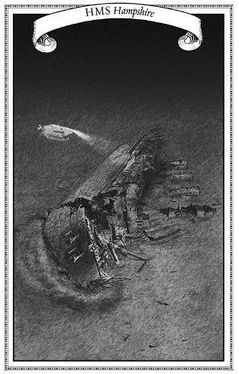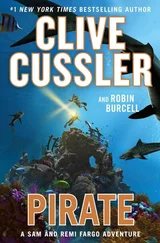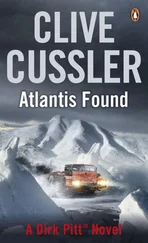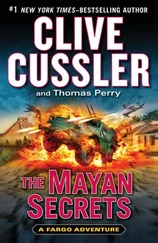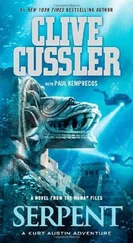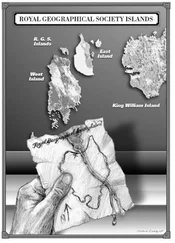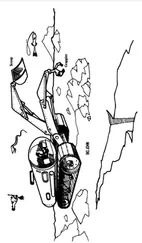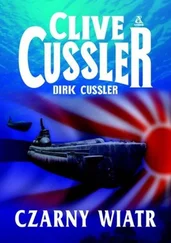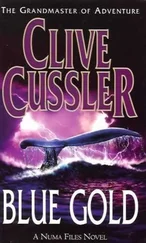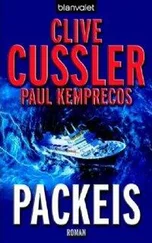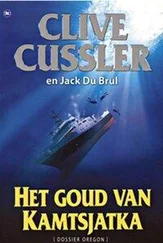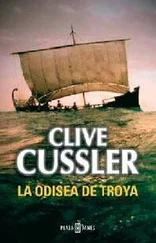“I will meet you here, at this cemetery, at exactly eleven p.m., two nights from now,” she said.
Zakkar studied the photo, noting the nearby cross streets, which were overlaid on the image. Once they were committed to memory, he looked up at Maria with a quizzical gaze.
“You will be meeting us there?” he asked.
“Yes. The ship will be sailing from here to Haifa.” She paused, then added firmly, “I will be leading the operation.”
The Arab nearly scoffed at the notion of a woman directing him on an assignment, but then he considered the handsome payoff he would receive for the indignity.
“I will be there with the explosives,” he promised.
She moved to her bunk and pulled out a pair of wooden foot-lockers stored underneath. The heavy lockers had metal handles affixed to each end and were stenciled with the words “Medical Supplies,” written in Hebrew.
“Here is the HMX. I will have my guards carry it to the dock.”
She stepped to the Arab mercenary and looked him hard in the eye.
“One last thing. I want no cowardice over our objective.”
Zakkar smiled. “As long as it is in Israel, I do not care what or whom you destroy.”
He turned and opened the door. “Till Jerusalem. May Allah be with you.”
“And also with you,” Maria muttered, but the Arab had already slid down the corridor, the Janissary following close behind.
After the explosives were transported to the Arab’s truck, Maria sat down and studied the photograph of Jerusalem once more. From the antiquated cemetery, she eyed the glistening target positioned just up the hill.
We’ll shake up the world this time, she thought to herself, before carefully returning the photograph and charts to a locked cabinet.
Rudi Gunn paced the bridge like a nervous cat. Though the bump on his head had long since receded, a purple bruise still blemished his temple. Every few steps, he would stop and scan the weathered dock of Çanakkale for signs of relief. Finding none, he would shake his head and resume pacing.
“This is crazy. We’re on our third day of impoundment. When are we going to be released?”
Pitt looked up from the chart table, where he was studying a map of the Turkish coast with Captain Kenfield.
“Our consulate in Istanbul has assured me that our release is imminent. The necessary paperwork is promised to be meandering through the local bureaucracy even as we speak.”
“The whole situation is outrageous,” Gunn complained. “We’re placed in lockdown while the killers of Tang and Iverson are allowed to slip free.”
Pitt couldn’t argue with him, but he did understand the dilemma. Long before the Aegean Explorer had contacted the Turkish Coast Guard, the marine authority had been alerted by two earlier radio calls. The first reported that the NUMA ship was illegally salvaging a historic Turkish shipwreck protected by the Cultural Ministry. The second call reported two divers killed during the salvage operation. The Turks refused to identify the source of the calls but rightfully acted on them in advance of the Aegean Explorer ’s request.
Once the NUMA ship was escorted to the port city of Çanakkale and impounded, the case was turned over to the local police, further compounding the confusion. Pitt immediately phoned Dr. Ruppé in Istanbul to document their approved presence on the wreck site, then he phoned his wife, Loren. She quickly badgered the State Department to push for their immediate release even after the police had searched the ship and, finding no artifacts, slowly realized there was no basis for arrest.
Rod Zeibig ducked his head through the doorway and broke the air of exasperation.
“You guys got a minute?”
“Sure,” Gunn replied. “We’re just busy here pulling our hair out of our heads one strand at a time.”
Zeibig stepped in with a folder in his hand and headed to the chart table.
“Maybe this will perk you up. I’ve got some information on your stone monolith.”
“Apparently, it’s not mine anymore,” Gunn mused.
“Did you manage to remember your Latin inscription?” Pitt asked, sliding over to allow room for Gunn and Zeibig to sit down.
“Yes. I actually wrote it down right when we got back to the ship but put it aside during all the commotion. I finally examined it this morning and performed a formal translation.”
“Tell me it’s the gravestone of Alexander the Great,” Gunn said wishfully.
“That would be wrong on two accounts, I’m afraid. The stone tablet is not a grave marker per se but a memorial. And there’s no mention of Alexander.”
He opened the folder, revealing a handwritten page of Latin that he had jotted down after viewing the monolith. The next page contained a typewritten translation, which he handed to Gunn. He read it silently at first, then aloud.
“In Remembrance of Centurion Plautius.
Scholae Palatinae and loyal guardian of Helena.
Lost in battle at sea off this point.
Faith. Honor. Fidelity.
— CORNICULAR TRAIANUS”
“Centurion Plautius,” Gunn repeated. “It’s a memorial to a Roman soldier?”
“Yes,” Zeibig replied, “which adds veracity to Al’s crown being of Roman origin, a gift from the Emperor Constantine.”
“A Scholae Palatinae loyal to Helena,” Pitt said. “The Scholae Palatinae were the elite security force of the later Roman emperors, as I recall, similar to the Praetorian Guard. The reference to Helena must be Helena Augustus.”
“That’s right,” Zeibig agreed. “The mother of Constantine I, who ruled in the early fourth century. Helena lived from 248 to 330 A.D., so the stone and the crown would presumably date to that era.”
“Any idea who this Traianus is?” Gunn asked.
“A corniculary is a military officer, typically a deputy position. I searched some Roman databases for a Traianus but came up empty.”
“I guess the big mystery still remains: Where did the crown and monolith originate and why were they in an Ottoman wreck?”
He gazed past Zeibig, perking up at the sight of two men in blue uniforms who were making their way down the quay toward the ship.
“Well, well, the local constables have returned,” he said. “I hope that’s our parole papers they are carrying with them.”
Captain Kenfield met the officers on the dock and escorted them aboard, where Pitt and Gunn joined them in the wardroom.
“I have your impoundment release here,” the elder officer stated in clear English. He was a round-faced man with drooping ears and a thick black mustache.
“Your government was very persuasive,” he added with a thin smile. “You are free to go.”
“Where does the investigation of my murdered crewmen stand?” Kenfield inquired.
“We have reopened the case as a potential homicide. At present, however, we have no suspects.”
“What about that yacht, the Sultana ?” Pitt asked.
“Yes, we saw the boat nearly cut Dirk to shreds,” Gunn pressed.
“We were able to trace that vessel to its owner, who informs us that you must be mistaken,” the officer replied. “The Sultana is on a charter cruise off Lebanon. We received e-mail photos this morning of the vessel moored in the Port of Beirut.”
“The Sultana was heavily damaged,” Pitt said. “There is no way she could have sailed to Lebanon.”
The officer’s assistant opened a briefcase and pulled out several printed photographs, which he handed to Pitt. The photos showed bow and port-side views of the blue yacht moored at a dusty facility. Pitt didn’t fail to notice that none of the photos showed the starboard flank, where he had rammed the yacht. The last photo showed a close-up of a Lebanese daily newspaper with the present date, the yacht appearing in the background. Gunn leaned over Pitt and studied the photos.
Читать дальше
